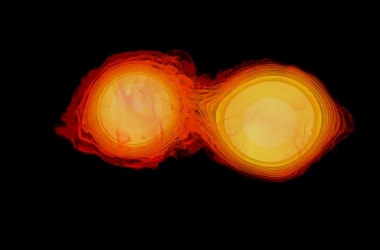
The LIGO-VIRGO collaboration, three members of which won this year’s physics Nobel Prize, strikes again, this time, to detect the merger of two neutron stars - extremely dense, massive but tiny, objects.
What is more striking is that gamma rays bursting from the event were observed by nearly 70 ground and space-based observatories.
This is the very first time that a cosmic event has been observed with gravitational waves as well as the light emanating from it.
Earlier observations made by LIGO have been of black hole mergers, and as no light can escape from a black hole, there was no such light counterpart to the measurements.
On August 17, LIGO’s real-time data analysis software caught a strong signal of gravitational waves from space in one of the two LIGO detectors.
At nearly the same time, the Gamma-ray Burst Monitor on NASA’s Fermi space telescope had detected a burst of gamma rays.
The fact that these two signals [the gravitational waves and the gamma ray bursts, which are essentially light waves] arrived at nearly the same time tell us that the speed of gravitational waves is extremely close to the speed of light.
This was predicted by Einstein, but it is the first time we are making a direct measurement,
LIGO-VIRGO collaboration includes about 1,500 scientists and of this about 40 are Indians.
The neutron stars of the signal detected on August 17 were located about 130 million light years away.
As these neutron stars spiralled together, they emitted gravitational waves that were detectable for about 100 seconds.
When they collided, a flash of light in the form of gamma rays was emitted.
This “gamma ray burst” was seen on Earth about two seconds after the gravitational waves were observed.
As a result, the gravitational wave detectors caught the signal which is the longest “chirp” heard so far - it lasted 100 seconds.
Neutron Stars: Know More- Neutron stars are the smallest, densest stars known to exist.
- These could be about 20 kilometres in diameter and have masses much greater than the Sun.
- A teaspoonful of neutron star material could hold a mass of a billion tonnes.
- They are formed when massive stars explode in supernovae.
- From informing detailed models of the inner workings of neutron stars and the emissions they produce, to more fundamental physics such as general relativity, this event is just so rich.